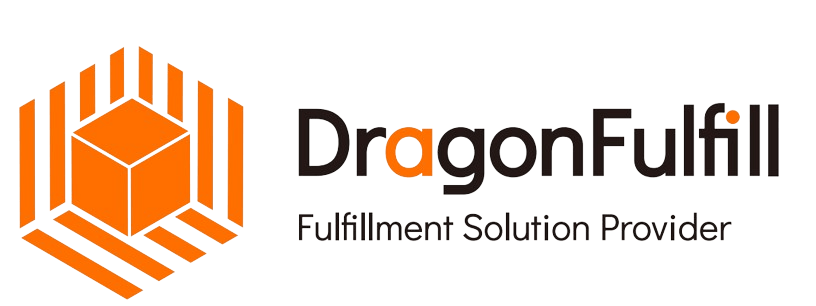Are you struggling to keep up with your growing order volumes? Or maybe you’re tired of dealing with shipping delays and high operational costs? Choosing the right order fulfillment company can make all the difference. In this guide, we’ll break down everything you need to know to find the perfect partner for your business.
What is Order Fulfillment and Why Does It Matter?
Order fulfillment is the complete process of receiving, processing, and delivering orders to your customers. It encompasses everything from inventory management and warehouse storage to picking products off shelves, packaging items appropriately, and shipping them to their final destination. But it's far more than just moving boxes around—it's the critical backbone of your entire e-commerce operation.
When I consult with growing businesses, I often find they underestimate just how significantly fulfillment impacts their bottom line. In fact, studies show that 84% of consumers are unlikely to shop with a brand again after just one poor delivery experience. That's a sobering statistic that underscores why getting fulfillment right isn't optional—it's essential.
A smooth fulfillment process ensures timely deliveries and happy customers. Consider this: in today's "I want it now" economy, 45% of consumers abandon their carts if shipping times are too long. Efficient fulfillment directly translates to higher conversion rates and repeat purchases.
It's a crucial part of your business because it directly impacts customer satisfaction and your bottom line. Think about what happens when fulfillment goes wrong: late deliveries, damaged products, incorrect items shipped—these mistakes don't just cost you the expense of rectifying them. They can permanently damage your brand reputation in an age where negative reviews spread like wildfire.
| Fulfillment Impact | Statistics | Business Implications |
|---|---|---|
| Customer Retention | 84% won't return after poor delivery | Higher customer acquisition costs |
| Cart Abandonment | 45% abandon if shipping is too slow | Lost sales opportunities |
| Operational Costs | Fulfillment typically accounts for 15-20% of net sales | Direct impact on profitability |
| Brand Reputation | 95% of customers share bad experiences | Exponential damage to brand value |
Efficient order fulfillment improves customer experience and reduces operational headaches. When done right, it creates a virtuous cycle: faster deliveries lead to happier customers, which generates positive reviews, driving more sales and enabling economies of scale in your fulfillment operations.
As your business scales, the complexity of fulfillment increases exponentially. What works when shipping 10 orders daily becomes completely unmanageable at 100 or 1,000 orders. That's precisely why understanding your fulfillment options—whether handling it in-house or partnering with specialists—becomes one of the most strategic decisions you'll make.
Signs Your Business Needs a Fulfillment Partner
Is your business growing faster than you can handle? That's fantastic news for your bottom line, but it might be keeping you up at night as you struggle to keep pace with increasing demands. As someone who's helped hundreds of businesses transition to professional fulfillment services, I can tell you that timing is everything.
Your Living Room Has Become a Warehouse
Remember when you could actually see your living room floor? If your inventory has taken over your personal space, that's a clear red flag. I once worked with a skincare brand founder who was storing products in her bathtub! When your home resembles a distribution center more than a living space, it's time to consider outsourcing.
Shipping Errors Are Increasing
Are customer complaints about wrong items or delayed shipments becoming more frequent? When your error rate climbs above 2%, customer satisfaction and reputation begin suffering significantly. Research shows that 84% of consumers won't return to a brand after just one poor delivery experience.
You're Spending Too Much Time Packing Boxes
If you're spending more time with packing tape than product development or marketing, something's wrong. A growing business requires your strategic input, not your manual labor. Track your hours for a week—if fulfillment tasks exceed 15-20 hours, you're losing valuable time that could be spent growing your business.
Seasonal Spikes Create Chaos
| Season | Average Order Increase | In-House Fulfillment Challenges |
|---|---|---|
| Holiday (Nov-Dec) | 35-70% | Temporary staff, training, space constraints |
| Back-to-School | 15-25% | Inventory management, processing delays |
| Valentine's/Mother's Day | 20-30% | Rush shipping requirements, precision timing |
If these seasonal spikes leave you scrambling, a fulfillment partner with scalable resources can absorb these fluctuations without the stress.
International Orders Feel Overwhelming
Customs forms, duties, international shipping regulations—expanding globally introduces layers of complexity. When customers from overseas start ordering, the paperwork alone can become a full-time job. Most fulfillment partners have established international shipping protocols that can save you both time and costly mistakes.
Your Shipping Costs Are Uncompetitive
If you're paying retail shipping rates while your competitors offer free or discounted shipping, you're at a significant disadvantage. Fulfillment companies leverage their volume to secure substantial carrier discounts—often 15-45% below standard rates—that they can pass on to you.
Recognizing these signs early can prevent fulfillment issues from stunting your growth. Remember, outsourcing fulfillment isn't admitting defeat—it's strategically positioning your business for sustainable expansion.
Key Factors to Consider When Choosing a Fulfillment Company
Not all fulfillment companies are created equal. Here's what to look for:
Industry Experience and Specialization
First, assess whether a fulfillment company understands your specific industry. A provider experienced in shipping delicate cosmetics might struggle with oversized furniture items. Ask potential partners about their experience with products similar to yours. I once worked with a client who switched to a fulfillment company specializing in their niche, resulting in a 28% decrease in damaged shipments.
Technology Integration Capabilities
Your fulfillment partner should seamlessly connect with your existing tech stack. The best providers offer robust API connections to popular e-commerce platforms like Shopify, WooCommerce, and Amazon. During your vetting process, ask for a demo of their dashboard and request specifics about how inventory updates are communicated. Real-time inventory visibility isn't a luxury—it's essential.
Geographic Distribution Strategy
The strategic location of fulfillment centers directly impacts shipping costs and delivery times. Consider this data from a recent client analysis:
| Distribution Strategy | Avg. Shipping Cost | Avg. Delivery Time | Customer Satisfaction |
|---|---|---|---|
| Single Central Warehouse | $8.75 | 4.2 days | 76% |
| Bi-Coastal Warehouses | $7.30 | 2.8 days | 84% |
| Multi-Region Network | $6.45 | 1.9 days | 93% |
As you can see, distributing inventory across multiple locations typically yields faster delivery times and higher customer satisfaction, though it may require more complex inventory management.
Scalability and Flexibility
Your business isn't static, and neither should your fulfillment solution be. The right partner grows with you, handling seasonal spikes without flinching. Ask about their capacity limits, minimum order requirements, and how they've handled sudden volume increases for other clients.
Value-Added Services
Beyond the basics of pick, pack, and ship, consider what else you might need: kitting, custom packaging, subscription box assembly, or return management. These services can differentiate your customer experience and potentially save you from managing multiple vendors.
Transparent Pricing Structure
The cheapest option rarely provides the best value. Request detailed pricing breakdowns that include storage fees, pick and pack charges, shipping costs, and any potential hidden fees like account setup, integration costs, or minimum volume penalties.
Remember, the right partner aligns with your business needs and goals. In my experience, the best fulfillment relationships aren't just transactional—they're strategic partnerships that evolve as your business grows.
Comparing Fulfillment Methods: In-House vs. Third-Party Logistics
Understanding the difference between in-house fulfillment and third-party logistics (3PL) is crucial. When I consult with growing businesses, this is often the first major decision point we tackle.
3PLs offer flexibility and scalability, while in-house fulfillment provides more control. But let's dig deeper into what this actually means for your business operations.
In-house fulfillment means you're handling everything yourself – from warehouse space to staffing, technology, and shipping negotiations. It's like being the captain of your own ship, with all the responsibility that entails. With 3PL, you're essentially renting expertise and infrastructure, allowing you to focus on product development and marketing instead of packing boxes.
Here's where the rubber meets the road – the actual comparison that matters to your bottom line:
| Feature | In-House Fulfillment | Third-Party Logistics (3PL) |
|---|---|---|
| Initial Investment | High ($10K-$100K+ for warehouse setup) | Low (typically just onboarding fees) |
| Ongoing Costs | Fixed (rent, staff, utilities regardless of volume) | Variable (pay for what you use) |
| Scalability | Limited (physical space constraints) | Highly flexible (can handle 10x growth) |
| Control | Complete oversight of operations | Limited visibility, dependent on 3PL processes |
| Expertise | Must develop internally | Immediate access to logistics professionals |
| Technology | Requires separate investment | Often included in service package |
| Time Investment | Significant management hours | Minimal oversight required |
I've seen businesses struggle with this decision, especially when they're attached to handling everything themselves. One e-commerce client was adamant about keeping fulfillment in-house until their holiday season orders jumped 300%. The resulting chaos and disappointed customers quickly changed their perspective.
On the flip side, businesses with highly customized packaging or unique handling requirements often find that maintaining in-house operations gives them the quality control they need. A luxury skincare brand I worked with actually moved from 3PL back to in-house specifically to maintain their premium unboxing experience.
In-house fulfillment has high fixed costs and full control, while 3PL has variable costs and is highly scalable. The right choice ultimately depends on your business stage, growth trajectory, and how much of your focus you want to dedicate to logistics versus other aspects of your business.
Evaluate which method aligns best with your business strategy. Consider not just where your company is today, but where it will be in 6-12 months, as switching fulfillment methods mid-growth can create significant operational challenges.
Conclusion
Choosing the right order fulfillment company is a big decision. By understanding your needs and evaluating potential partners, you can find a solution that helps your business thrive. Ready to take the next step? Start by asking the right questions and exploring your options.




